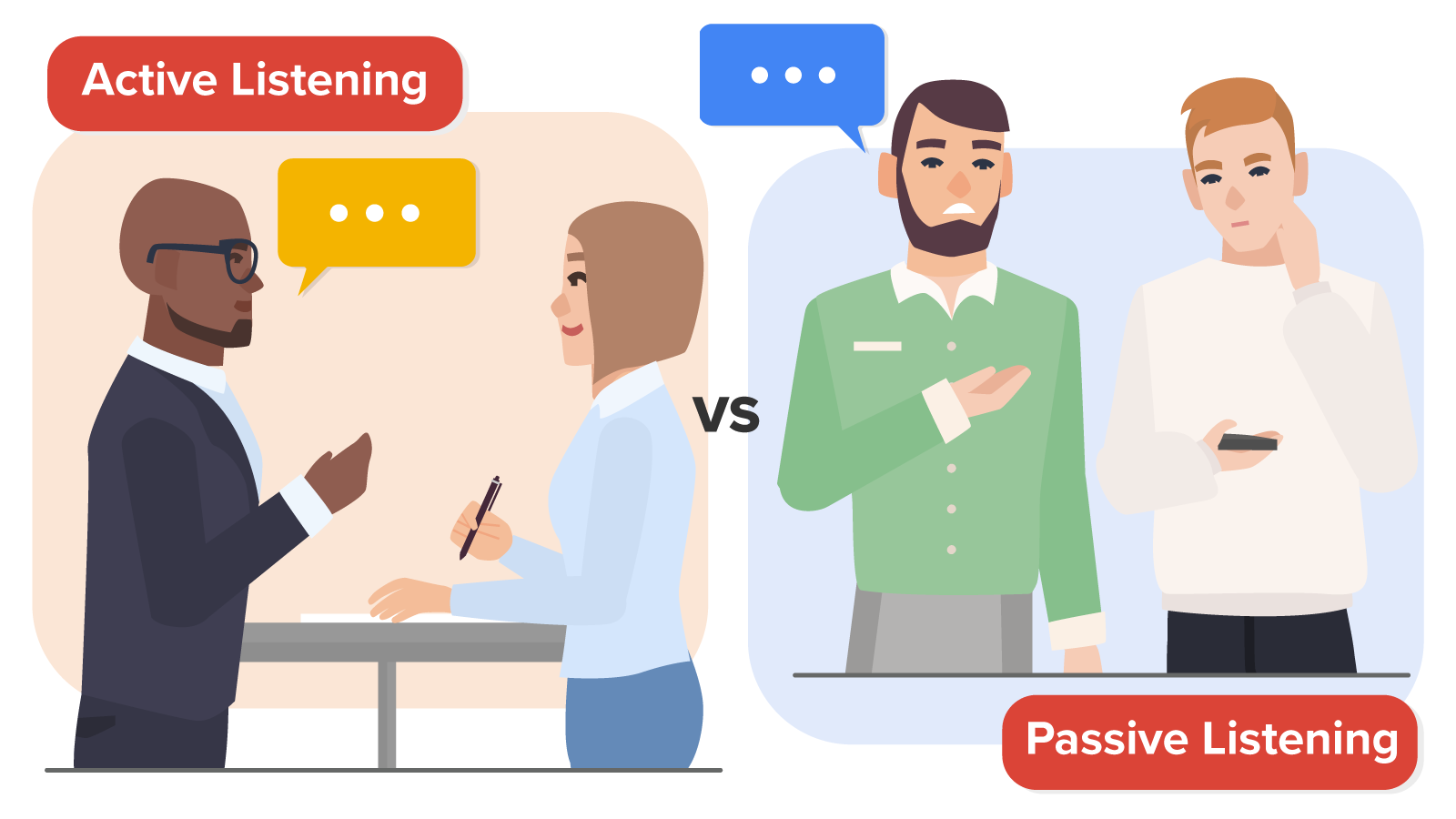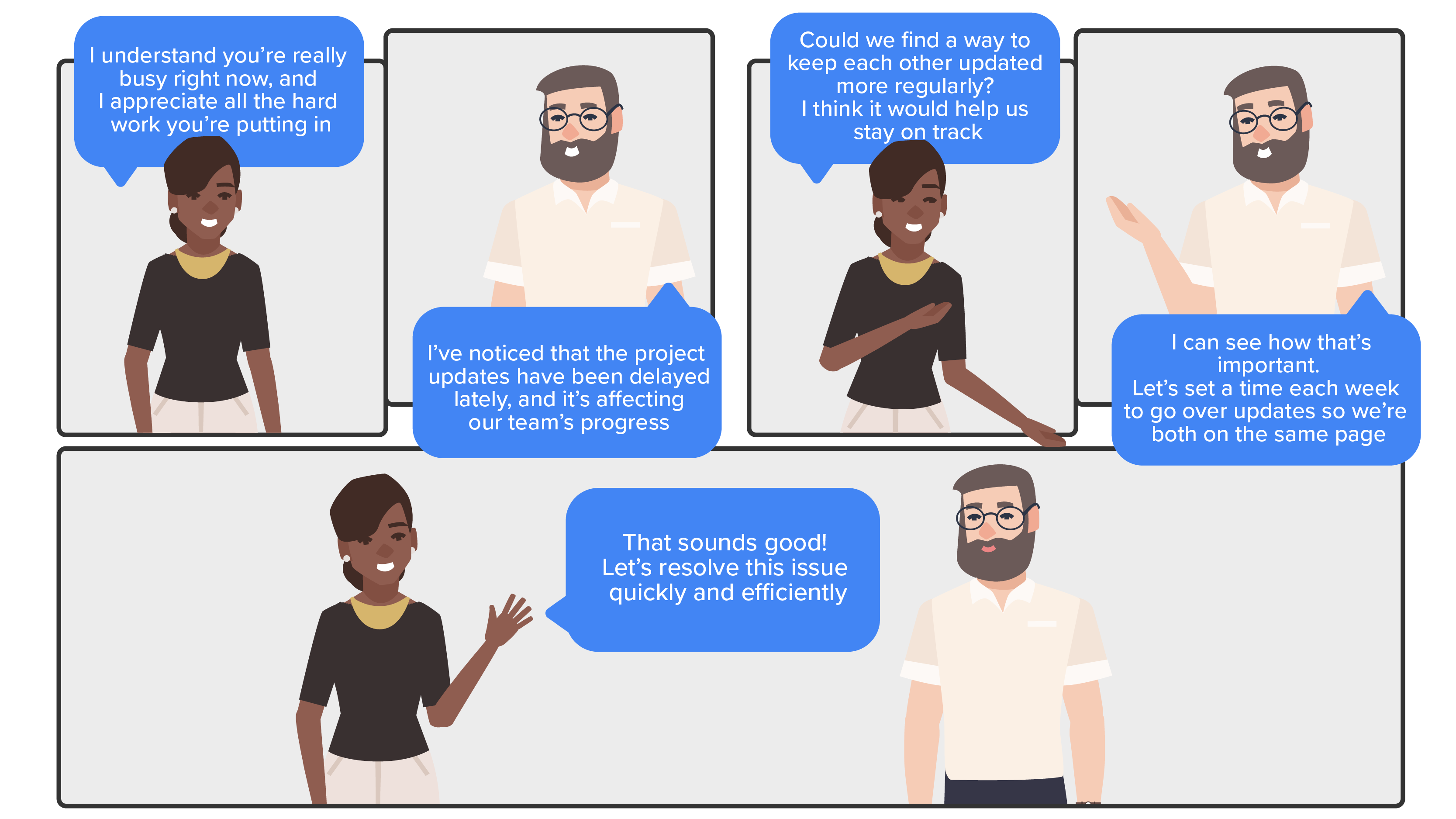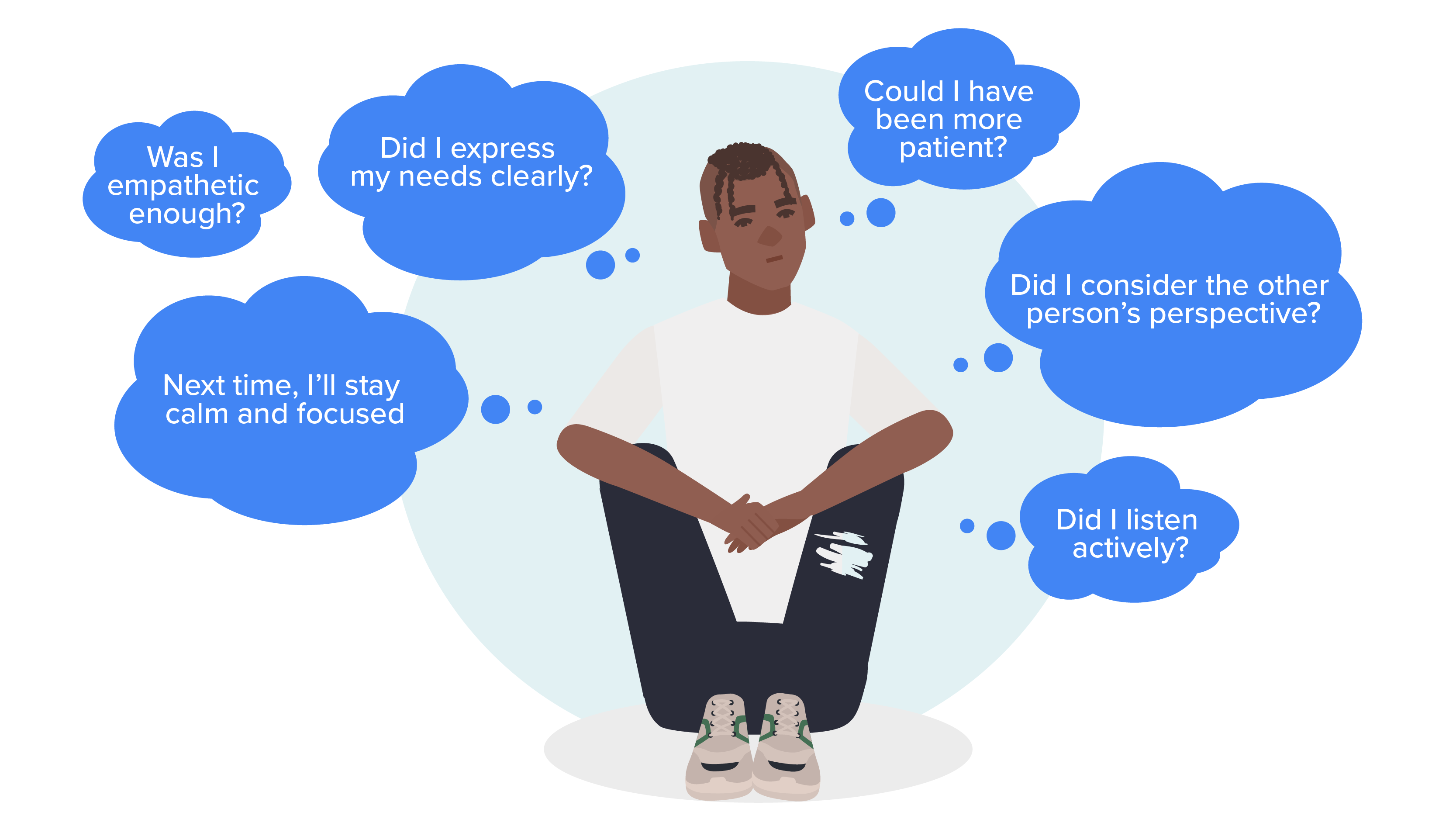Table of Contents |

Effective communication is fundamental to resolving conflicts, building relationships, and achieving mutual understanding. At the heart of communication lies listening—not just passive hearing but active listening, which requires focus, attention, and empathy. In this lesson, you’ll explore the differences between passive and active listening, learn how to apply active listening in conflict resolution, and learn key techniques such as summarizing, paraphrasing, and reflecting. By understanding the importance of listening and using these skills, you’ll be able to enhance your communication and conflict resolution capabilities.
When most people think of listening, they think of simply hearing someone speak. However, active listening goes far beyond that—it’s about fully understanding the message and showing the speaker that you’ve grasped what they’re saying in terms of both content and emotions.
Active listening requires paying close attention to both verbal and nonverbal cues.
EXAMPLE
Making eye contact and maintaining an open body posture lets the speaker know that they have your undivided attention. In contrast, if you’re checking your phone or distracted by other tasks, it becomes obvious to the speaker that you’re only half-listening.Active listening can be summed up as listening with intention and empathy. It’s important to give feedback to the speaker, demonstrating that you understand not just the words but also the emotional content behind them. This kind of listening is important in any relationship, whether personal or professional.
In conflict resolution, active listening is an essential tool. When emotions are heightened, it’s easy to focus on defending yourself rather than truly listening to the other person. However, real resolution comes from understanding each party’s perspective.
One of the cornerstones of conflict resolution is showing both parties that you have listened to and understood their points of view. This can be achieved by summarizing, paraphrasing, or reflecting back what was said. Importantly, it also involves suspending judgment. Active listening doesn’t mean you have to agree with the speaker—it simply means you understand their perspective before responding.
EXAMPLE
In a neighborhood dispute about noise levels, one party might say, “I can’t sleep because your dogs are barking late into the night.” If you’re the mediator, you could respond, “So you’re saying that the dogs barking is keeping you awake and it’s affecting your sleep?” This confirms that you’ve heard them correctly and opens the door for further dialogue.Active listening involves several key techniques that help ensure effective communication. Summarizing, paraphrasing, and reflecting are essential parts of active listening, as they allow you to restate or clarify the speaker’s message, showing that you understand both the content and the emotional tone. Paraphrasing helps reword what has been said while reflecting emphasizes the emotional aspects. Asking clarifying questions, such as yes/no, short answer, leading, or open-ended questions, allows for deeper understanding and prevents misunderstandings. Additionally, using I-statements helps express your feelings and needs clearly without placing blame, fostering constructive dialogue and reducing defensiveness. Together, these techniques create a more engaged and empathetic conversation.
Summarizing, paraphrasing, and reflecting are all skills that enhance active listening. Each serves a different purpose, but, together, they help ensure clarity and understanding.
When you summarize, you repeat the key points of what someone has said, often in checklist form. This lets the speaker know that you’ve captured the essence of their message. Summarizing is especially useful in situations where there is a lot of information being shared, like when you’re gathering instructions for a project or when discussing the next steps in a plan.
EXAMPLE
Your colleague might say, “We need to finalize the design, meet with the client, and send the proposal by Friday.” A good summary would be “So, you’re asking that we finalize the design, meet with the client, and send out the proposal by the end of this week?”Paraphrasing involves restating the speaker’s message in your own words. Unlike summarizing, paraphrasing doesn’t focus on every single point but rather on conveying a general understanding of the content.
EXAMPLE
If a colleague mentions they’re frustrated with the team’s slow pace, you might paraphrase by saying, “It sounds like you’re concerned about how long this project is taking to complete.”Reflecting focuses on the emotional content of what the speaker is saying. This skill allows you to show empathy and understanding by acknowledging the emotions underlying the words.
EXAMPLE
Your friend might say, “I’m so stressed about everything I need to do before the weekend.” Reflecting might involve saying, “It sounds like you’re feeling really overwhelmed right now.”Clarifying questions are also a big part of active listening because they help clear up any misunderstandings or uncertainties. There are four main types of clarifying questions, each with a different purpose.
| Types of Questions | Description of Questions | Examples of Questions |
|---|---|---|
| Yes/No Questions | These are simple confirmation questions that help you verify facts. | “Did you call the client this morning?” |
| Short Answer Questions | Short answer questions go beyond yes/no and ask for brief explanations or details. | “What did the client say when you called?” |
| Leading Questions | These questions reflect your assumptions and are often used to confirm them. | “Don’t you think the meeting went well today?” |
| Open-Ended Questions | These questions invite the speaker to provide more detailed responses. | “Can you tell me how the meeting went today?” |
I-statements are a powerful way to communicate your feelings without placing blame or escalating a conflict. In contrast, you-statements tend to accuse or assign blame, making the other person defensive. I-statements focus on the problem rather than the person.
EXAMPLE
Instead of saying, “You never listen to me,” try saying, “When you interrupt me, I feel like my opinion isn’t being valued, and that makes me frustrated.”I-statements consist of three parts:

Assertive communication is about standing up for your own needs while also respecting the needs of others. It differs from aggressive communication, which is often disrespectful and focuses solely on the speaker’s needs. Assertive communication leads to healthier relationships and more effective problem-solving.
Assertive communication differs significantly from aggressive communication. When someone communicates aggressively, they often express their needs in a forceful or disrespectful way, ignoring or minimizing the other person’s feelings and needs. Aggressive communicators might raise their voice, use accusatory language, or disregard the other person’s input, leading to defensiveness or resentment. This style of communication tends to escalate conflicts and damages relationships, as it creates a hostile environment where one person’s needs are prioritized at the expense of the other.
In contrast, assertive communication promotes collaboration and mutual respect. By stating your needs clearly and directly while acknowledging the other person’s perspective, you foster an atmosphere where both parties feel heard and valued. This style of communication encourages dialogue, problem-solving, and compromise, leading to more constructive and healthier relationships.
An assertive statement includes three things:
EXAMPLE
“I understand that everyone is busy with their own tasks, but I need you to help with this report so we can meet the deadline.”Let’s go a bit deeper into each piece of an assertive statement:
EXAMPLE
Saying, “I understand you’re feeling overwhelmed with your workload,” demonstrates that you’re aware of their situation before you introduce your own concern.EXAMPLE
Instead of saying, “You never help me,” you could say, “I noticed that you haven’t had time to assist with the report this week.”EXAMPLE
“I need your help with this report so that we can meet the deadline by Friday” is a clear and respectful way to communicate your expectations.IN CONTEXT
Let’s apply these components to a real-life scenario. Imagine you’re working on a group project, and one of your teammates has not been contributing as much as expected. Instead of allowing frustration to build or addressing the issue aggressively, you can use an assertive communication approach.
In this scenario, you are not only expressing your concern but also acknowledging the other person’s situation and offering a solution. This type of communication promotes understanding and cooperation rather than confrontation or avoidance.
- Empathy/validation: “I know you’ve been really busy with your other assignments, and I understand that balancing all your responsibilities can be tough.”
- Statement of the problem: “However, I’ve noticed that you haven’t had the chance to help with the research for our project as much as we had agreed.”
- Statement of what you need: “I really need your help to finalize the research section by tomorrow so we can meet our project deadline.”
Assertive communication offers numerous benefits, fostering trust and mutual respect in relationships by promoting open and honest dialogue. This leads to stronger, healthier interactions, as individuals feel heard without feeling threatened or attacked. By clearly stating your needs, assertive communication minimizes the chances of miscommunication and misunderstanding. It also builds self-esteem and confidence, allowing you to express your thoughts and needs without guilt or fear while maintaining respectful interactions. Additionally, assertiveness reduces stress and anxiety by preventing feelings of resentment and frustration from accumulating, leading to greater emotional well-being. Finally, it encourages problem-solving by opening the door to solutions that work for both parties, focusing on collaboration rather than blame or winning arguments.
Here are some tips to help you practice assertive communication in your everyday interactions:

By reflecting on your past experience and applying the techniques from this lesson, you can take meaningful steps toward improving your communication skills and fostering more understanding in your conversations.
Source: THIS TUTORIAL WAS AUTHORED BY MARLENE JOHNSON (2019) and STEPHANIE MENEFEE and TRACI CULL (2024). PLEASE SEE OUR TERMS OF USE.